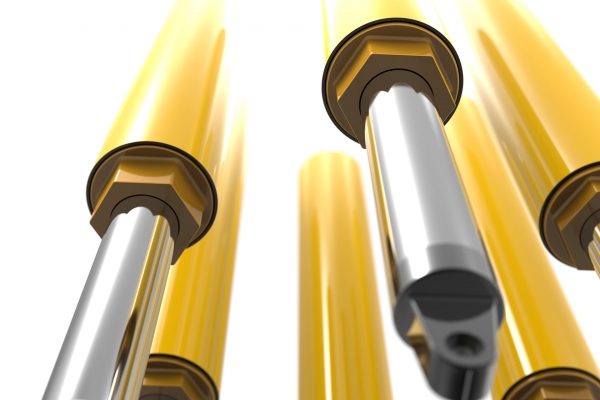-
Homepage
-
Seals and Gaskets
-
Standard Profiles
-
Piston Seal
- Double acting piston seal for hydraulics
Double-acting piston seal as a hydraulic seal
The distinction between a double-acting seal and a single-acting piston seal for hydraulic systems lies in the simplicity of the single-acting seal's design. As a result, it is less expensive but not as suitable for very high pressures or for handling high and especially rapid mechanical stresses. Double-acting seals, on the other hand, are recommended for situations involving high pressure and mechanical stresses such as abrasion, and speed/movement.
A hydraulic double-acting piston seal comprises an elastic seal ring positioned on the piston. This seal ring is engineered to create a tight barrier against fluid leakage as the piston moves within the cylinder. Depending on their intended application, piston seals can be crafted from various materials, including NBR, FKM, and silicone.
For hydraulic applications, a functionally reliable, double-acting piston seal is crucial for the efficiency and performance of hydraulic cylinders and systems. A faulty piston seal can cause fluid leaks and losses, leading to decreased performance and potentially damaging the cylinder or the entire assembly.
Areas of application of double-acting piston seals for hydraulics
Hydraulic piston seals (double acting) are used in a variety of applications where a seal is required between a movable and a fixed component.
Here are some examples:
- Hydraulic systems in machines and plants
- Construction and agricultural machinery such as excavators, dump trucks or tractors
- Mobile and stationary compressors
- Industrial and process pumps
- Offshore and marine applications
- In mining as well as in tunnelling
Sealing Materials for Double Acting Hydraulic Piston Seals
There are various sealing materials suitable for double-acting hydraulic seals, depending on the application requirements and the operational conditions.
The following are some of the most commonly used materials:
- NBR (Nitrile Rubber): Widely used in standard hydraulic applications due to its cost-effectiveness and good chemical resistance.
- FKM (Fluorocarbon Rubber): Offers greater resistance to high temperatures and aggressive media.
- EPDM (Ethylene Propylene Diene Monomer Rubber): Known for its good heat and aging resistance.
- PTFE (Polytetrafluoroethylene): Especially suited for applications with high pressures and velocities, as well as in strongly chemical environments.
- Silicone: Exhibits resistance to both high and low temperatures.
Selecting the appropriate sealing material is crucial for ensuring long-term durability and high performance.



